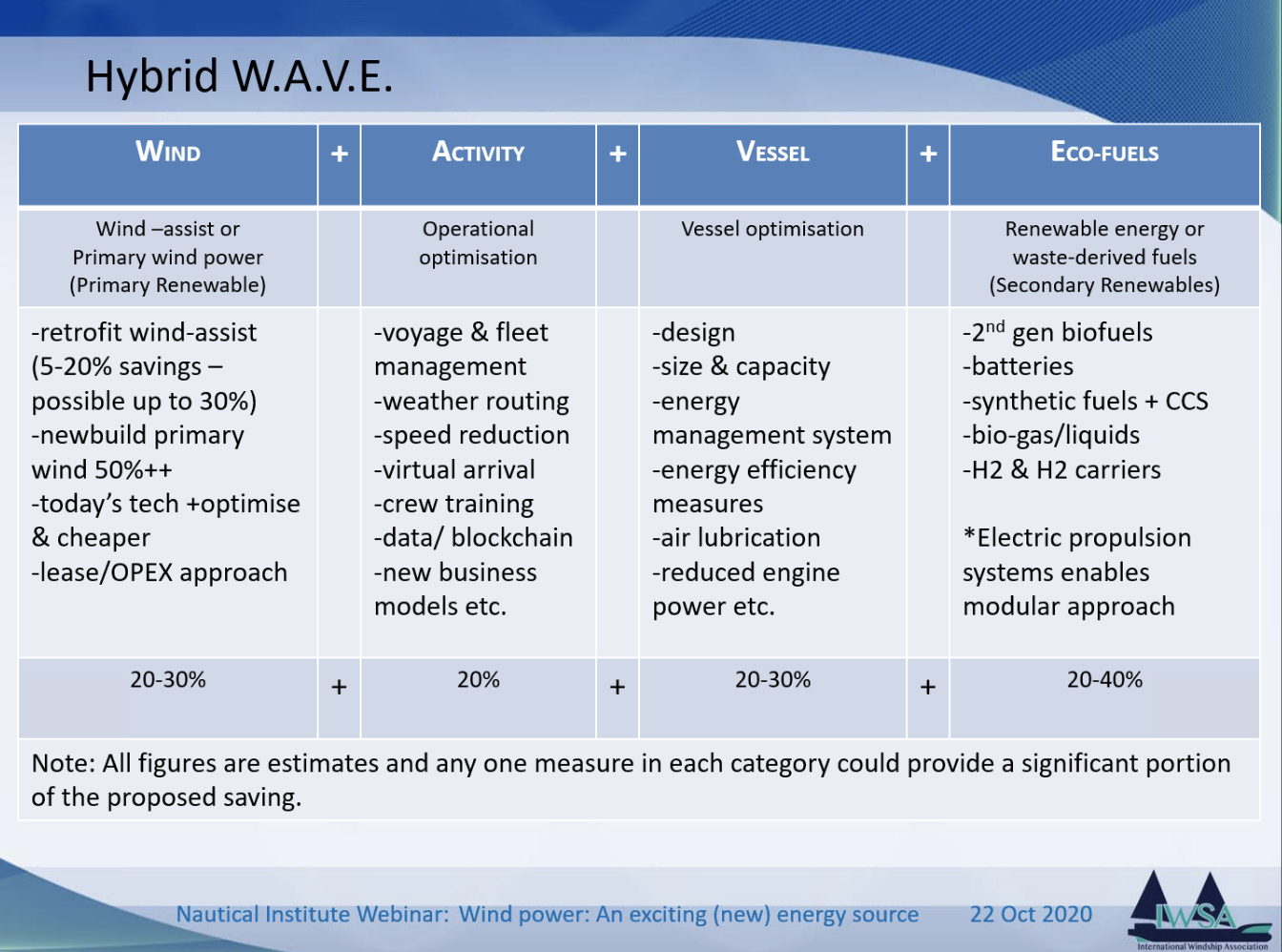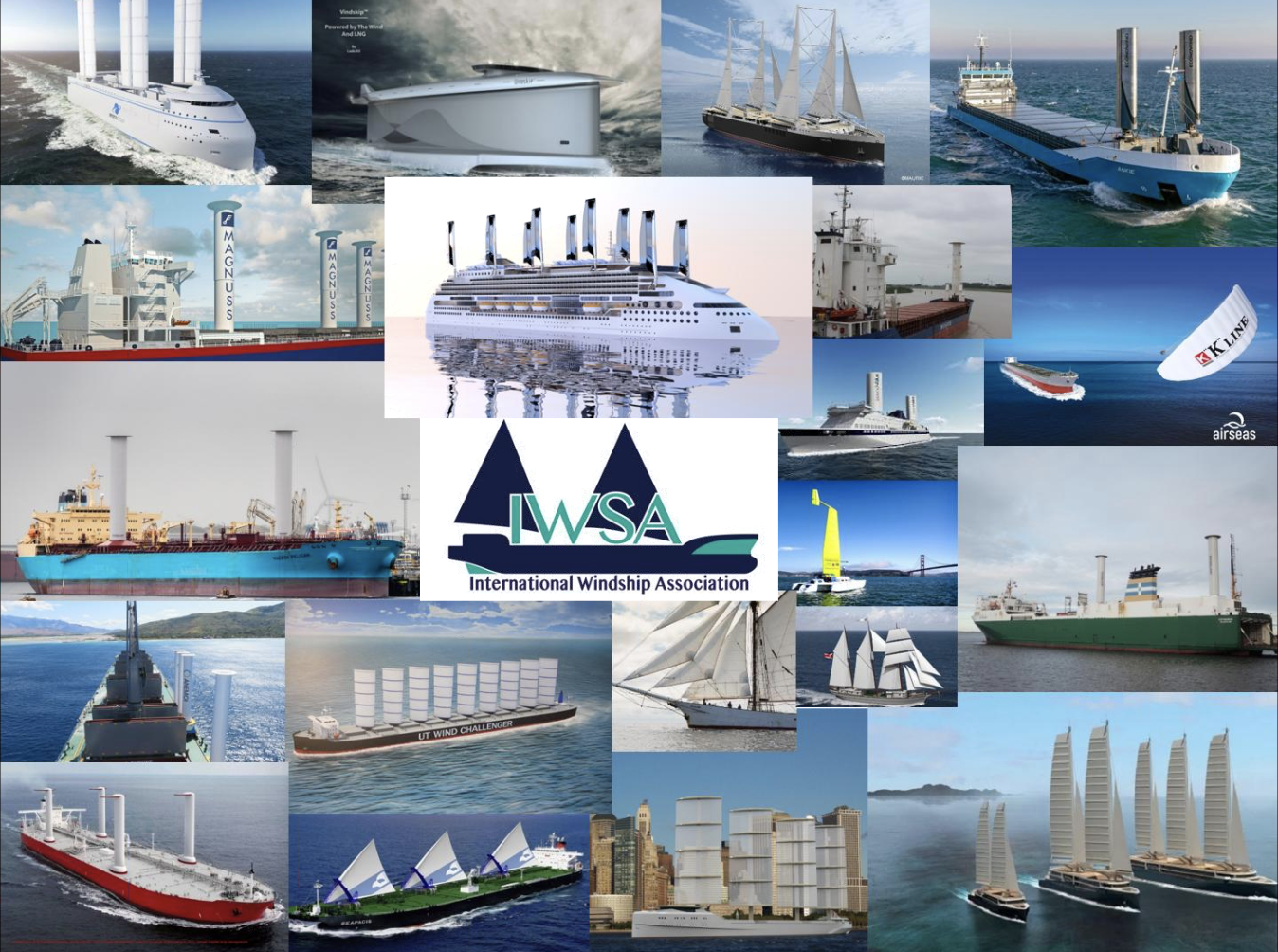Wind-assisted propulsion will not be the full answer to making ships emission free, but it could provide about 30 per cent of the propulsive power. This makes finding a zero-emission solution for the other 70 per cent an ‘easier nut to crack’, says Gavin Allwright, Secretary General of the International Windship Association. That is why he expects the wind-assist market to really take off in the coming years.
To achieve the safe upper limit for global warming of 1.5 degrees Celsius, ‘all ships designed and built today must operate in a net zero emission world at the end of their service life,’ says Allwright. He calls wind propulsion a ‘primary renewable’ that requires no new infrastructure. ‘It can deliver savings of up to 30 per cent for retrofits and possibly even more for optimised newbuilds.’
 Other benefits, Allwright points out, is that the technology is available now. In addition, there are lease options and modular rentals to reduce capital cost. He stresses the availability of secondary renewables such as NH3/H2 and batteries is possibly still a decade away.
Other benefits, Allwright points out, is that the technology is available now. In addition, there are lease options and modular rentals to reduce capital cost. He stresses the availability of secondary renewables such as NH3/H2 and batteries is possibly still a decade away.
He adds that ‘hybrid solutions will reduce power requirements, will lower bunkering and storage requirements and reduce both capital and operational expenditure.’
Wind power in the mix
And there is a question of range. Some of the possible zero-emission solutions are not (yet) suitable for shipping. The equipment needed would become too expensive, too large, too heavy or does not supply enough power. ‘Yet, if 30 per cent of the propulsive power needed is provided by wind, you only have to worry about the other 70 per cent,’ Allwright explains.
He sees a mix which he describes as W.A.V.E.: wind, activity, vessel and eco-fuels. In his view, wind will supply up to 30 per cent of the power supply. Operational optimisation (activity) can result in a 20 per cent power saving, and vessel optimisation in another 20 per cent saving. This leaves 40 per cent for eco-fuels. This is a much easier nut to crack, since their lower energy density often requires much more space on board a vessel.’

Wind propulsion today and in the near future
Allwright also sketches the market forecast and current status of wind-assisted propulsion. ‘By the end of 2020, 13 ocean-going vessels will be equipped with wind-assisted ship propulsion as well as over 20 small sailing cargo and cruise vessels. By the end of 2022, based on projects already announced, 47+ retrofit and new build vessels will be sea-trialling and in commercial operation next to over 30 smaller vessels.’ However, he expects new projects to be announced as well, meaning this number could grow considerably.
‘I see a change in how people in the boardroom see wind-assisted propulsion,’ states Allwright. ‘In 2014, people said “why should we do this”, in 2016/17 this changed into “how do we get it onto our ships?” And now: “our competitors are doing it, so we should look at it seriously”. Perception is that the cost of wind-assisted propulsion systems will go down, while fuel prices will go up. This will make it profitable.’
Allwright: ‘I expect the market for wind-assisted propulsion to double each year over the next 2-3 years.’ He also refers to the UK Government Clean Maritime Plan (July 2019), which estimated the market for wind propulsion systems to grow from 300 million pounds in the 2020s to around 2 billion pounds in the 2050s worldwide.
Allwright presented his view on the role of wind-assisted ship propulsion now and in the future during a webinar on this topic organised by The Nautical Institute on 22 October.








